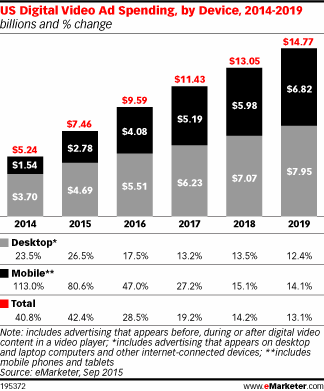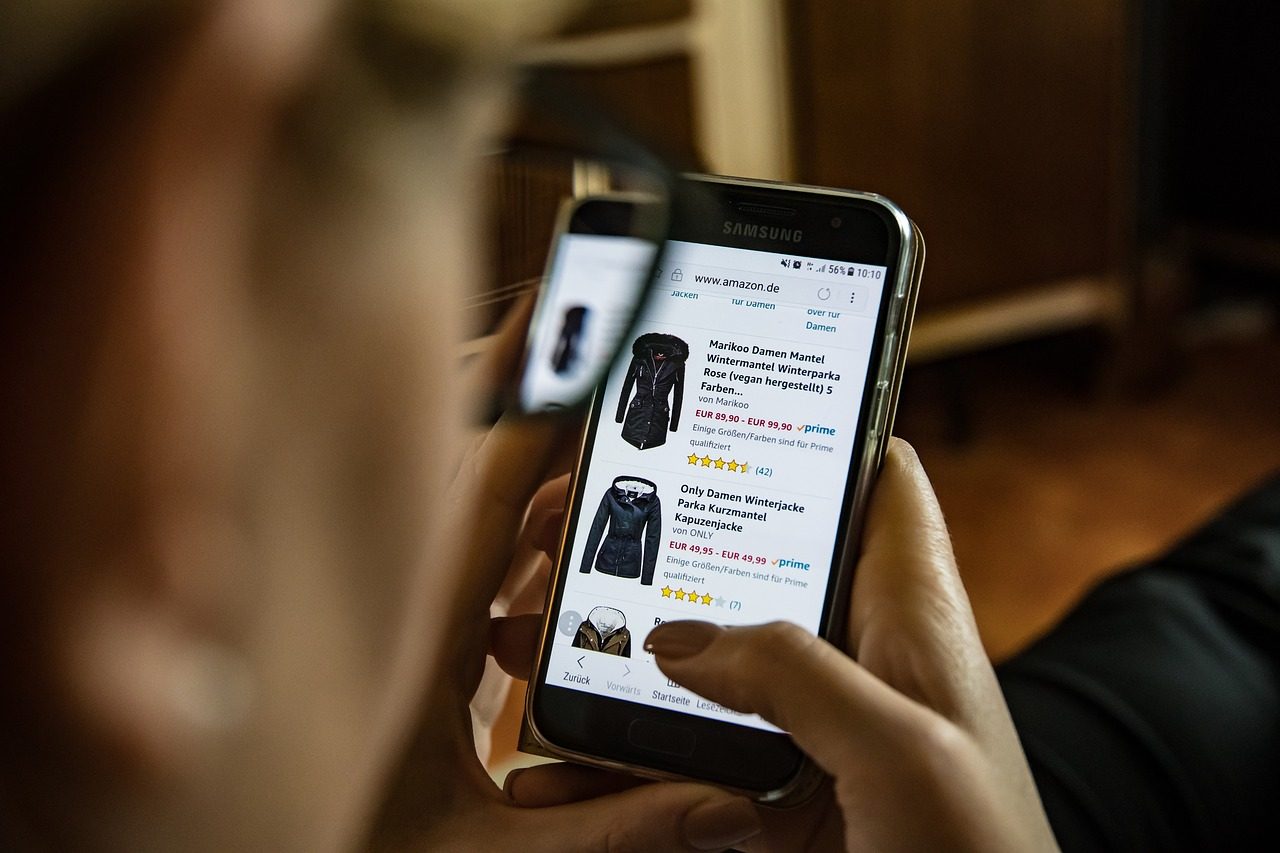In Q4 2017, e-commerce in the U.S. grew faster than it ever has since 2011.
Compared to 2016, online retail sales grew 16% to reach over $450 billion.
Now let’s take a look at mobile’s share of this boom in e-commerce:
- 25% of all retail e-commerce purchases were made on a smartphone in Q4 2016.
- Mobile e-commerce growth is over triple that of total retail and e-commerce.
- Mobile advertising is expected to reach 72% of total digital ad spend by 2019.
When you put two-and-two together, it’s pretty clear that the bright future of retail lies in mobile commerce, or m-commerce.
With this in mind, it’s important to understand your mobile audience.
A successful mobile e-commerce marketing strategy depends on reaching the right people in the way they prefer on their mobile device.
Whether that’s through a mobile web e-commerce app or a branded video, mobile shoppers act differently than those in-store or on desktop.
Here are the top five psychological factors that motivate people to buy on mobile.
All of these are derived from a recent Facebook IQ study that investigated how people use mobile.
Read onto discover the truths of why people buy on mobile, and what they prefer in an m-commerce shopping experience.
Then, you can optimize your own mobile ad strategy and start reaching people exactly the right way on their smartphones and tablets.
1. Mobile Ads Can Drive and Enhance In-Store Experiences
For 52% of global clothing and shoe shoppers, their search begins online and on mobile.
However, when it comes to actually making a purchase, 51% prefer to buy in-store.
This number rises to 68% when examining U.S. shoppers of household appliances.
As a business, you can harness the power of m-commerce to convert people offline by creating omni-channel experiences for your customers.
Then, you can use tools like a Messenger chatbot to enhance the user experience while actually in the store.
When creating mobile ads for your e-commerce store, create copy and design that tells peoplemore about your brand.
The goal is to get them interested enough to visit your store.
Facebook ad options like Click-to-Messenger and the Store Visit Objective can enhance your m-commerce conversion strategy.
These mobile marketing tactics get people into direct communication with your business.
Then, you can track their conversion to determine what worked to get them from the digital world to your storefront.
2. Mobile Customers Defer to Other Customers for Shopping Decisions
People trust their peers when it comes to product reviews and purchasing decisions.
They will formulate their opinion on a brand mostly based on what others have to say about it.
For example, 84% of millenials say user-generated content – even that from strangers – impacts their purchasing decision.
So how does this translate to m-commerce?
Well, Instagram is essentially the hub of UGC.
When people see a post from someone they follow on this platform using a certain product, they’re more likely to buy it.
You can leverage Instagram videos and photos from users that display your brand in order to build loyalty and engagement.
In the same vein, 71% of mobile shoppers are more likely to make a purchase that is recommended by a peer.
This is what makes influencer marketing so impactful.
Partnering with an influential online personality can inspire the trust and motivation your mobile e-commerce strategy needs.
3. Instagram Creates M-Commerce Communities
The photo-sharing platform boasts over 500 million daily active users.
This means there’s pretty much a hashtag for everything you can imagine.
Considering each hashtag can represent an interest, product, activity, or pretty much anything else, each are a representation of a shared belief.
The hashtag #sportscar, for example, had 3.5 million attributed posts in March-April 2017.
Through hashtags, commenting and sharing features, and more, Instagram fosters communities that can be harnessed by mobile advertisers for boosting brand awareness and sales.
To rally people around your brand, you can start using popular Instagram hashtags.
Also, create posts with the goal in mind of inspiring others.
For a clothing brand, this can look like a Boomerang Instagram video of a curated outfit.
For a food brand, it can be a recipe video.
In every vertical, Instagram users are looking to connect with others through visual content.
And often, the others they’re connecting with are brands.
80% of Instagram users follow a business on the platform.
As you grow your mobile e-commerce strategy, keep the community appeal of Instagram in mind as you create content that inspires, resonates, and engages.
4. Video Mobile Ads Are the Preferred Format
Video is the future of digital advertising, and mobile video is no exception.
By 2020, it is expected that 75% of mobile traffic will be video.

So why is this format so much more effective?
Consider that 90% of consumers state that a video helps them make a purchasing decision.
And that one-third of the entire time people spend online is spent watching video.
Consumers prefer m-commerce video because it’s more informative and engaging.
Video can also align people more closely with your brand by evoking certain emotions.
There’s no better platform that demonstrates this than Facebook.
Creating a great Facebook video ad for mobile can add a personal touch to your brand.
As a result, viewers can learn who you are, what you do, and why they should shop with you all with one piece of video content.
5. Shoppers Want to Connect With E-commerce Companies on Mobile Messenger Apps
In these days of mobile convenience and efficiency, people prefer to interact with brands using their favorite apps.
Facebook Messenger is the most popular platform in the U.S. to facilitate this communication.
The platform has over 1.2 billion monthly users, many of whom use it to talk to brands.
This is in large part due to the fact that millenials prefer messaging 8X more than face-to-face communication or talking on the phone.
Given that 67% of customers predict they’ll start messaging businesses
more frequently in the next two years, Messenger for m-commerce will only continue to grow in importance.
Using Messenger for your mobile e-commerce customer service strategy is one solution to consider.
Another, which we mentioned earlier, is to build a Messenger chatbot.
These tools aren’t just for customer service; they can lead to direct sales increases, too.
SnapTravel, for example, earned $1 million in hotel bookings since deploying their Facebook Messenger bot.
Using Messenger can drive your mobile advertising forward by reaching your audience how they prefer to be reached.
And these conversational interfaces offer greater convenience, efficiency, and cost-savings abilities than a traditional customer service team.
People are just as – if not more – motivated to shop on mobile as they are in stores or on desktop.
Tap into what drives them, and your m-commerce success will soar.


